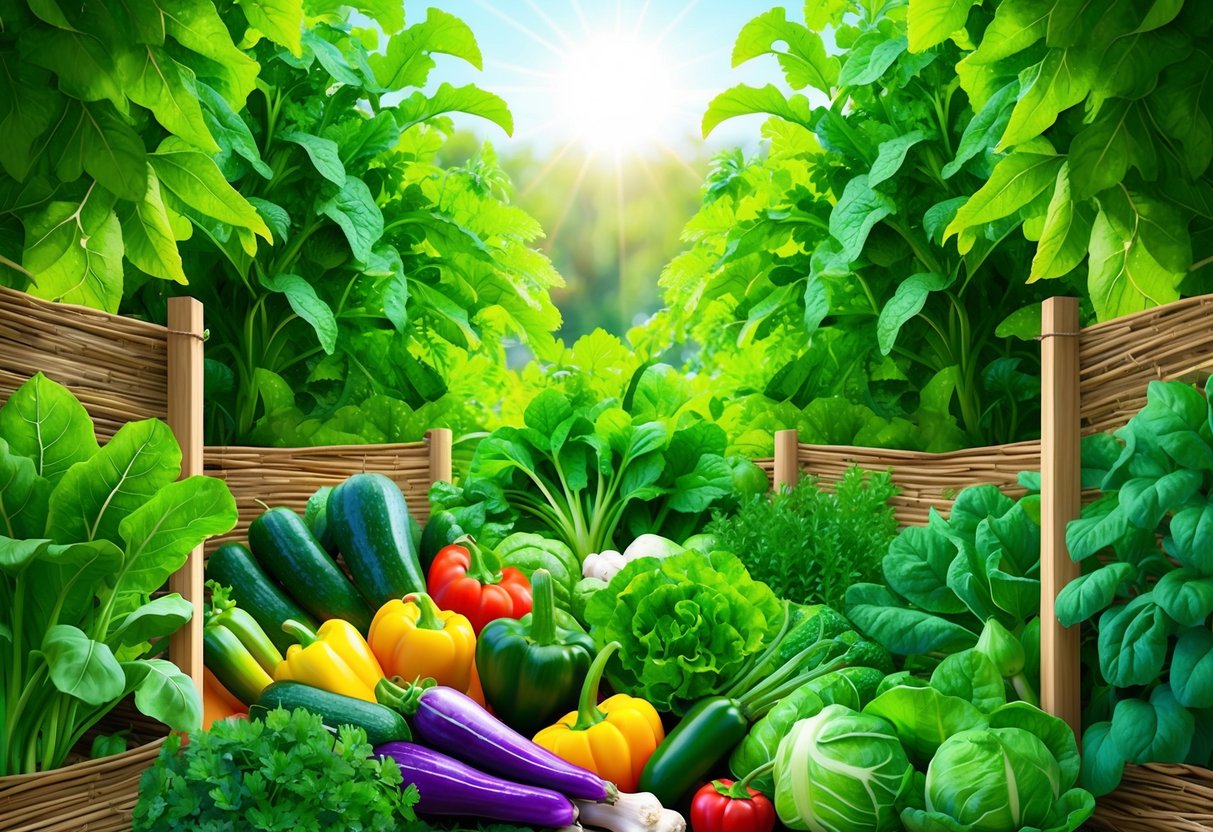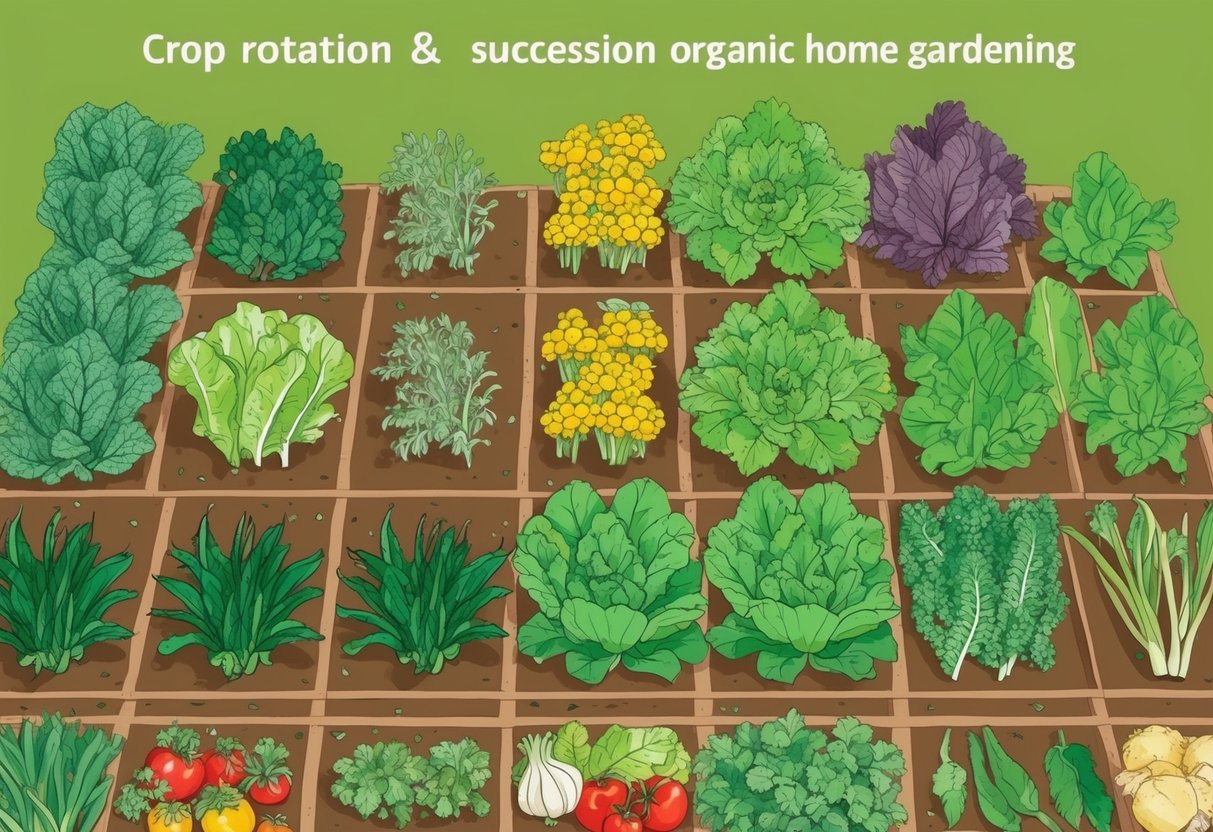
Managing Pests and Disease Organically

Organic vegetable gardening requires careful strategies to control pests and disease while keeping plants chemical-free and healthy. Sustainable methods help preserve soil life and protect beneficial insects, which improves long-term productivity and crop quality.
Natural Pest Control Strategies
Effective pest management in home gardens uses a combination of practices that reduce pest populations without causing harm to the environment. Physical methods like handpicking insects or using lightweight row covers can protect young plants from beetles and aphids.
Companion planting, such as growing marigolds or basil near vegetable crops, helps repel unwanted insects and adds diversity to the garden. Trap cropping is another sustainable approach—specific plants attract pests away from valuable veggies, keeping main crops safe.
Maintaining clean, debris-free beds reduces hiding places for slugs and caterpillars. Regularly pruning and removing pest-damaged plant material limits the spread and decreases infestations.
Encouraging beneficial insects, including ladybugs and lacewings, helps control pest populations naturally. For more tips, see organic pest control methods.
Disease Prevention in Organic Gardening
Disease prevention starts with choosing disease-resistant vegetable varieties and rotating crops each season. This reduces the buildup of pathogens and interrupts disease cycles.
Soil health is critical. Using well-aged compost and organic matter supports beneficial microbes that outcompete soil-borne diseases.
Watering at the base of plants instead of overhead keeps leaves dry, which can help prevent fungal diseases. Sanitizing tools regularly and spacing plants for adequate airflow reduces moisture and stops the spread of bacteria and viruses.
Clearing plant debris promptly at the end of the season further protects future crops from lingering disease organisms.
Avoiding Herbicides, Synthetic Fertilizers, and Antibiotics
Organic gardening strictly avoids chemical herbicides, synthetic fertilizers, and antibiotics, all of which can disrupt soil ecosystems and leave residues on produce. Instead, gardeners use natural amendments like compost, aged manure, and mineral-based fertilizers for balanced nutrition.
Weeds are managed through mulching, hand weeding, and dense plantings that shade out competitors. Maintaining soil fertility without synthetics improves plant resilience, making them less susceptible to pests and disease.
Antibiotics are never applied; instead, organic growers focus on prevention and plant health to avoid disease outbreaks. This approach helps organic vegetables maintain their purity and integrity for fresh, healthy meals at home.
For more guidance, review growing organic vegetables at home.
Crop Rotation and Succession Planting

Rotating vegetables by family and planning follow-up plantings throughout the season are essential for a healthy, high-yielding organic garden. These practices help prevent pest infestations, lessen disease buildup, and keep the soil fertile for future crops.
Why Crop Rotation Matters in Organic Gardening
Crop rotation involves moving different plant families to new locations in the garden each year. This practice can break cycles of disease and reduce pests that tend to target the same types of crops.
For example, rotating tomatoes, potatoes, and peppers—commonly affected by similar pathogens—minimizes soil-borne problems. Beyond disease and pest management, crop rotation helps balance the soil’s nutrient demands.
Certain crops, like beans and peas, can add nitrogen to the soil, benefitting heavy feeders such as leafy greens when planted in the following season. Properly rotating crops supports organic gardening methods by reducing the need for synthetic fertilizers and pesticides.
Planning a rotation schedule over three or four years, where each garden bed sees a different crop group each year, is a practical approach. For a step-by-step guide on best practices, Crop Rotation Ideas for an Organic Vegetable Garden offers useful tips and tables to help get started.
Planning for Continuous Harvest
Succession planting allows gardeners to harvest fresh organic produce throughout the season instead of all at once. This process involves sowing new seeds or transplants every few weeks to keep mature plants coming in stages.
Timing is crucial for succession planting. Fast-growing crops like radishes, lettuce, and spinach can be resown several times in a season, while longer-season vegetables like broccoli may only allow for one or two rounds.
Keep a simple list or planting calendar to track sowing dates and expected harvests, using gaps left behind by harvested crops for new plantings. Pairing succession planting with crop rotation minimizes periods when soil stays bare, which helps maintain soil health and reduces weed pressure.
For deeper insights on timing and strategies, visit this guide about succession planting for year-round vegetables.